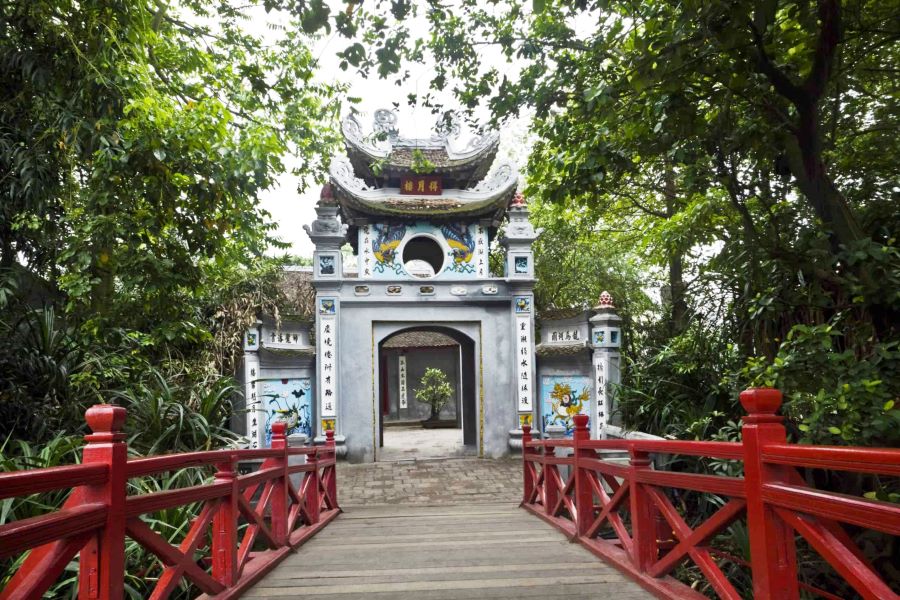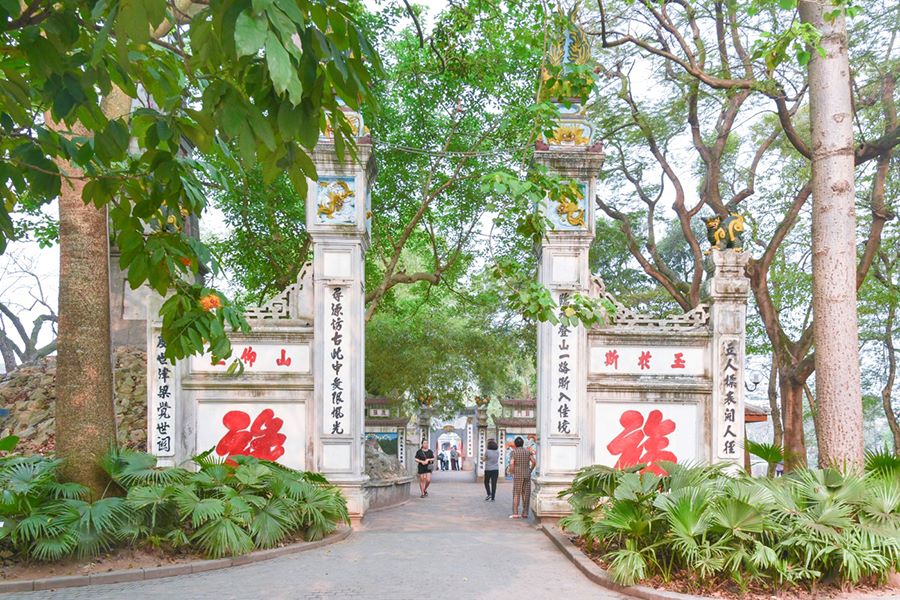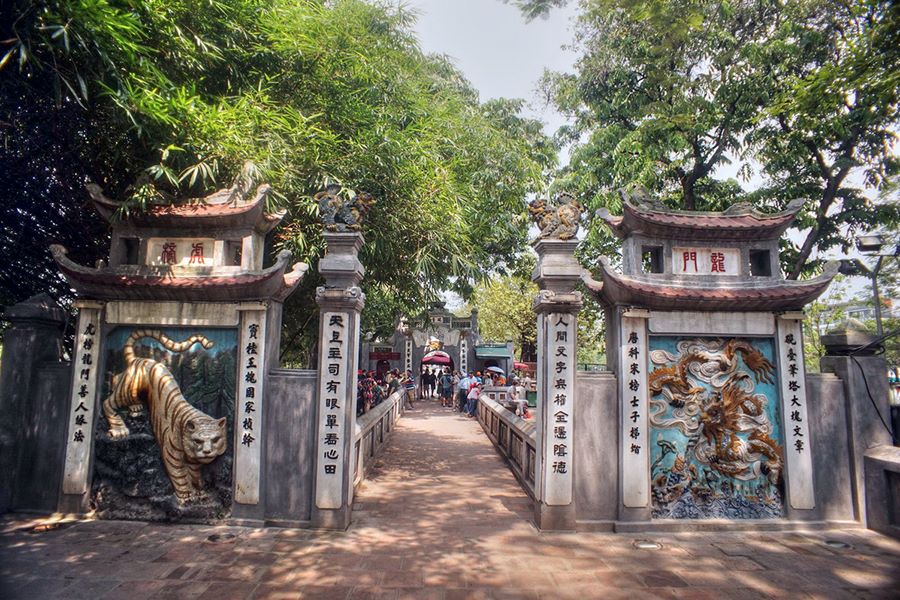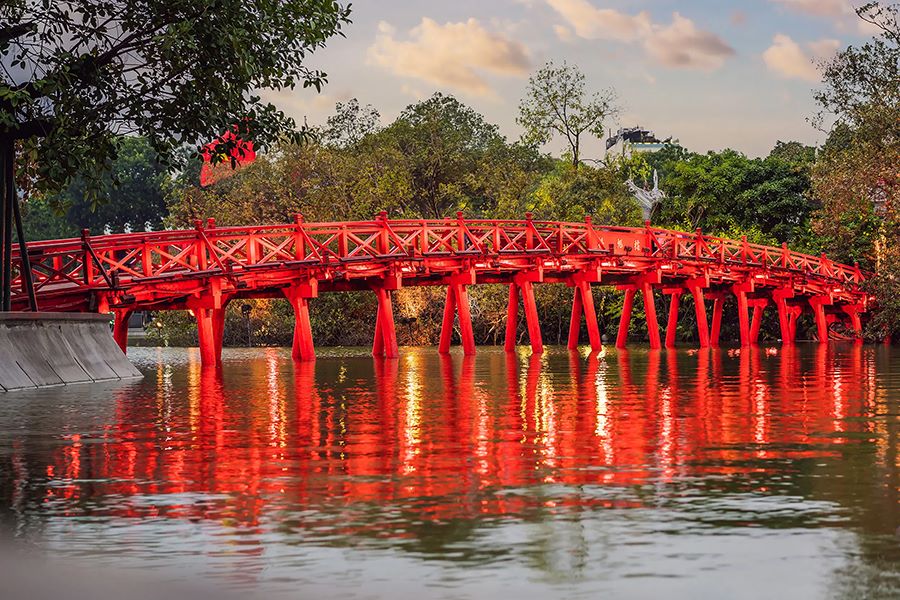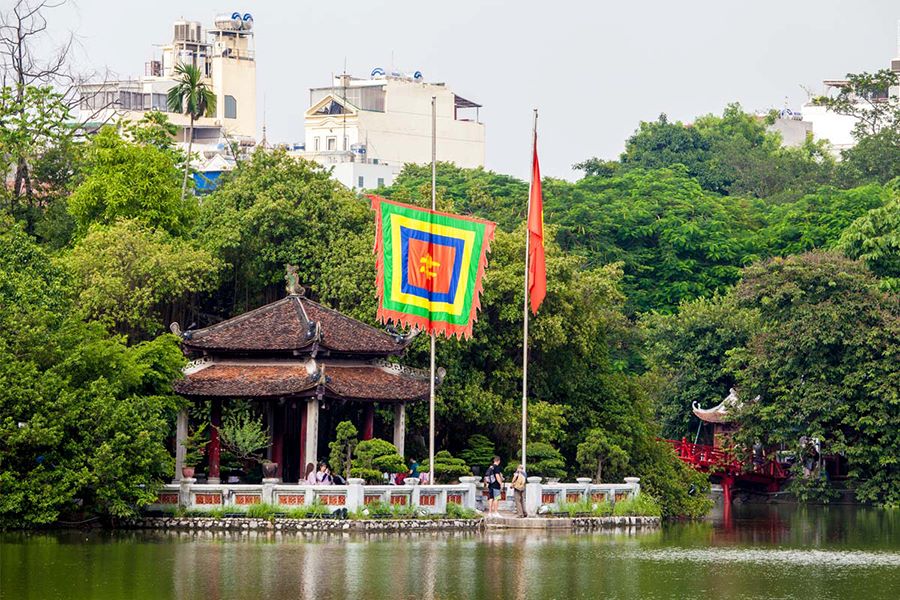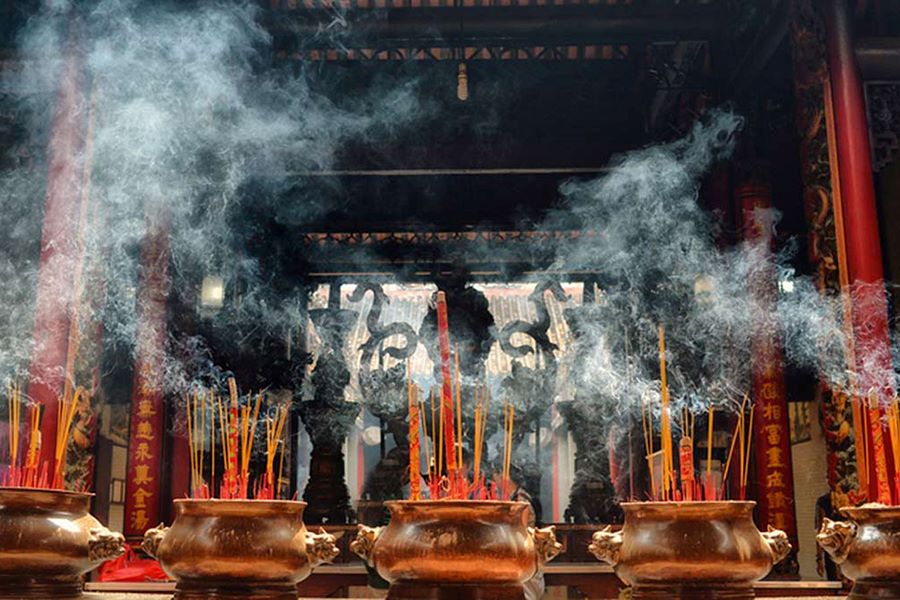Famous for its combination of traditional architecture and Vietnamese spirituality, Ngoc Son Temple is located in Hanoi. People visit this holy location to offer prayers for prosperity and serenity. An itinerary for any Indochina travel packages must always include a visit to the well-known spiritual site, Ngoc Son Temple. In addition to capturing the deep spiritual life of the Vietnamese people throughout the feudal era, the temple is notable for its distinctive architecture and excellent vista of the well-known Hoan Kiem Lake. As a result, hundreds of residents and visitors come here every day to investigate.
Ngoc Son Temple History
The Ly Dynasty's autumn of 1841 saw the beginning of Ngoc Son Temple's construction, based on stelae found at the location. It honors Wenchang Dijun, also known as Van Xuong De Quan, a Taoist deity who bestows wealth and happiness upon intellectuals. Additionally, it honors General Tran Hung Dao, who in the thirteenth century routed the Mongols (1231–1300).
Throughout history, there have been multiple demolitions of the temple. Scholar Nguyen Van Van Sieu (1799–1872) fixed it in 1865. He transformed the location into a sizable architectural complex at Hoan Kiem Lake by erecting Pen Tower, The Huc Bridge, and Tran Ba Pavilion.
Ngoc Son Temple, located calmly in the center of the metropolis, has seen several changes over the past few centuries. It was designated as a National Special Relic site in 2013. To date, it has grown in popularity as a travel destination for Vietnamese and foreign tourists who come to soak in the beauty of Hoan Kiem Lake or offer prayers for good fortune.
Ngoc Son Temple Reviews
The historic Ngoc Son Temple is located in the center of a busy metropolis. The entire architectural complex is meant to look natural in its surroundings. Before reaching the main temple structure on the islet, you will have to go through a few of the complex's architectural pieces, specifically:
Nghi Mon Gate
The complex's entrance is called Nghi Mon Gate, and it has two columns as well as walls with Chinese characters inscribed on both sides.
As you enter, Pen Tower is visible to your left. When King Tu Duc (1829–1883) was in power in 1865, the tower was built atop a stone mound. With a stone feather pen on top, it stands 28 meters tall. The words "Write onto the sky" are written in three Chinese characters, "Ta Thanh Thien," that are carved on the tower. It honors the literary contributions of Trinh Lords (1545–1787) as well as the resistance to northern invaders.
Long Mon Ho Bang Gate
You will reach Long Mon Ho Bang Gate after passing the Pen Tower. This gate has walls on both sides in addition to two columns. The roofs on the walls are reminiscent of several pagodas. The dragon-shaped embossed design on the right wall reads "Dragon Gate" (Long Mon) and is topped with two Chinese characters. A white tiger with Chinese characters carved on it that reads "Tiger Board" (Ho Bang) can be seen on the left wall. The Tiger Board and Dragon Gate are representations of passing exams that encourage students to pursue further education.
Dai Nghien Gate
The Huc Bridge's Dai Nghien Gate is situated next to the Pen Tower. An ink pot sits on the gate. The blue stone pot is made to look like it has three solid legs because it rests on the backs of three stone toads. The well-known author Nguyen Van Sieu's poem, composed of 64 Chinese letters, is located in the middle of the pot. It is stated that this ink pot will be shadowed by the stone feather pen atop the Pen Tower when the sun rises on the morning of the fifth day of the fifth lunar month.
The Huc Bridge
The Huc Bridge, whose name translates to "where sunlight beams in the early morning," is revered as a representation of the Sun God. The bridge has a curved design, is painted red, and is constructed of wood. If you come here early in the morning, you can take advantage of the vast expanse of water, mild breezes, and early sunshine. The bridge comes to life at dusk, producing an incredibly mesmerizing picture.
Dac Nguyet Lau Gate
You may get to Dac Nguyet Lau Gate, popularly known as the "Moon Gazing Pavilion," by continuing to the end of The Huc Bridge. The old banyan tree that shades the gate is encircled by overgrown trees. There are two stories to it. There are two roof layers covering the upper story. This window is circular and has pictures of dragons and phoenixes all around it.
Tran Ba Pavilion
Ngoc Son Temple is situated to the south of Tran Ba Pavilion. During the feudal era, it was intended to serve as a reliable barrier against harmful cultural influences. It is square in design and has two roof layers, held up by eight columns—four of which are built of stone and four of wood.
The main area of the Ngoc Son Temple
There are two temple buildings side by side in the main area. Inside one structure are the statues of General Tran Hung Dao and Van Xuong De Quan. On the other are the preserved bodies of two large Hoan Kiem Lake turtles. They are kept reverently and preserved behind glass cases.
Vietnam places a great deal of cultural and historical significance on these turtles, especially in light of the lake's fabled mystical turtle. Legend has it that Emperor Le Loi, who commanded Vietnamese armies against invaders, received a legendary sword back from a mystical turtle that emerged from the lake!
Ngoc Son Temple Entrance Fee & Opening Hours
- Youngsters under 15: No charge
- Pupils: 15,000 VND per ticket
- Adults: 30,000 VND per ticket
Hours of operation for Ngoc Son Temple: 7 am to 6 pm on weekdays and 7 am to 9 pm on weekends.
Since Ngoc Son Temple is a somber and holy venue, you should research the dress code in addition to the entrance price and opening times:
- Don't laugh or make noise, and move carefully.
- Opt for dressy, cover-up attire (no tank tops, shorts, or miniskirts).
- When you enter the temple structure to light incense, remove your sandals and shoes.
How to Get to Ngoc Son Temple
Located on Jade Islet, a tall hillock northeast of Hoan Kiem Lake, is the Ngoc Son Temple. The Huc Bridge, which is a distinctive red structure, connects people to the islet.
The Ngoc Son Temple is conveniently located in the heart of Hanoi and is easily accessible by car, taxi, or public bus. A motorbike rental is a great way to see the temple and other parts of Hanoi. If you are traveling with your family or in a large group, it would be more appropriate to rent a car or take a taxi. If you decide to travel by bus, Hoan Kiem Lake is served by buses 08, 14, 31, and 36.
Vietnam's capital city, Ngoc Son Temple, is a holy site that has seen numerous highs and lows. It has great spiritual significance for the locals and an age-old beauty. As a result, make sure to include this location on your bucket list if you intend to travel to Hanoi.

